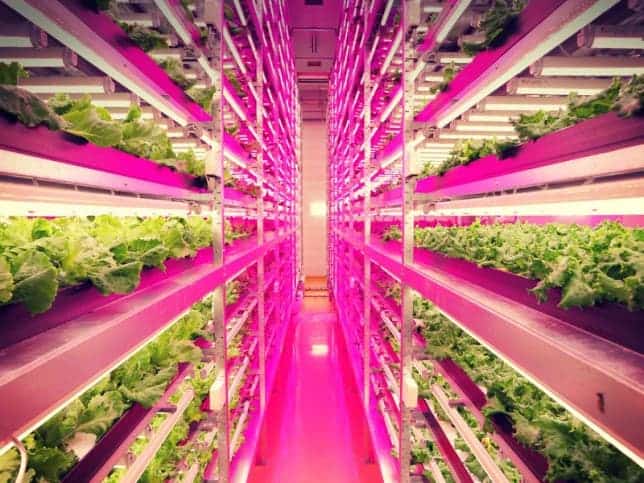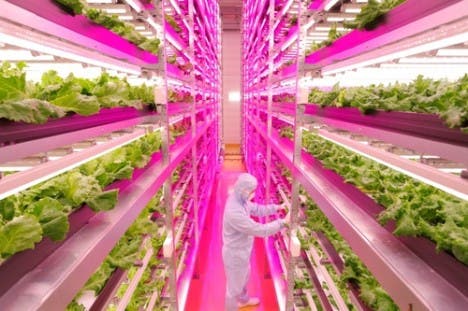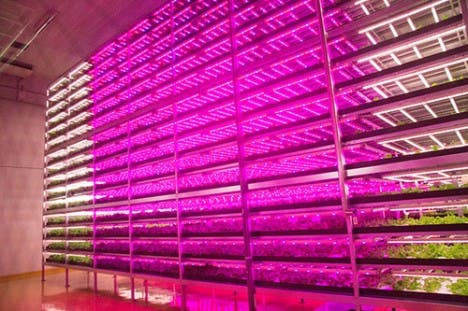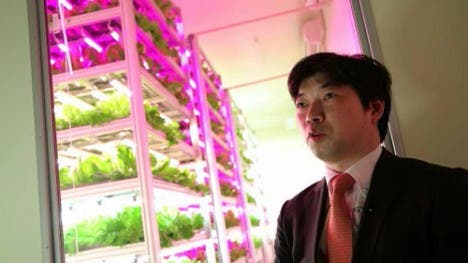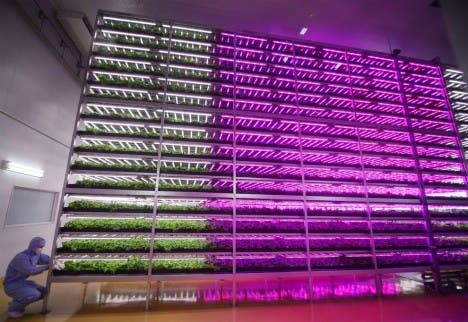Following the 2011 earthquake and subsequent tsunami that plunged the whole country of Japan in turmoil, a local food shortage ensued. An inspired entrepreneur, Shigeharu Shimamura, took an old semiconductor factory that was abandoned following the disaster and turned it into the largest indoor farm in the world. Using state of the art growing technology, his company manages to make some 10,000 heads of lettuce per day out of the 25,000 square feet facility. This makes it 100 times more productive per square foot than traditional agriculture, all with 40% less power, 80% less food waste and 99% less water usage than outdoor fields.
The massive productivity is mainly achieved by manipulating the plants’ day and night cycles. Using custom developed LEDs from General Electric, scientists have shortened the day/night cycle for the lettuce, to such an extent that they grow two and a half times faster. Besides lightning, systems are in place that fine-tune other important factors like humidity and temperature. Stacking growth mediums atop each other further boosts productivity per square foot.
Productivity is not only increased by producing more, but by wasting less. In a conventional agriculture setting more than 30% of the lettuce grown ends up in the trash heap, while just 3% of Shimamura’s special “coreless” indoor lettuce gets wasted.
Currently, the process is “only half automated. Machines do some work, but the picking part is done manually. In the future, though, I expect an emergence of harvesting robots. For example, a robot that can transplant seedlings, or for cutting and harvesting, or transporting harvested produce to be packaged,” according to a report issued by the Japanese company. Once the process becomes fully automated, productivity is expected to rise even further.
“I believe that, at least technically, we can produce almost any kind of plant in a factory. But what makes most economic sense is to produce fast-growing vegetables that can be sent to the market quickly. That means leaf vegetables for us now. In the future, though, we would like to expand to a wider variety of produce. It’s not just vegetables we are thinking about, though. The factory can also produce medicinal plants. I believe that there is a very good possibility we will be involved in a variety of products soon,” says Shimamura.
What makes the prospect so appealing is that this is a self-contained design that can be implemented anywhere. Once you have the technology and science well in place, you can transfer operations to anywhere on the globe, and true enough the same technologies has been announced and is now under construction in Hong Kong, with Mongolia, Russia and mainland China. Like Shimamura stated earlier, however, this approach only works in some limited cases, most notably crowded cities with expensive real-estate. One can imagine such micro-facilities made by small producers right in the heart of cities, thus stocking a daily, fresh supplies of farm goods. As the costs of installing large scale or small scale indoor farming go down, expect to hear more of such endeavors. Who knows, maybe soon there’ll be one in your very own city.
All images courtesy of Shimamura JAPAN.
